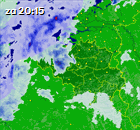160-m (1.8-2.0 MHz) Propagation..
Each amateur band propagates signals differently. The 160m band is our only MW band and it acts similar to the broadcast band. It is primarily a nighttime and wintertime band as it suffers from high summertime static (QRN). Most hams that use this band for nearby contacts use horizontal dipoles or inverted-V antennas. Some hams use vertical antennas on this band to work DX. These DX contacts are made in the fall and wintertime at night via F-layer or greyline propagation when the static levels are low. Dipoles and inverted-V antennas do not work well for DX on this band.9. 80-m (3.5 4.0 MHz) PropagationThe CW part of this band is called the 80m band and the voice part of the band is known as 75m. Like 160m, eighty meters suffers from the same QRN in the summertime. Working DX on this band is a popular avocation during the fall and winter. However, 80m is used primarily for working nets and ragchewing. 80m is primarily a nighttime band. This band can vary from being open most of the day in years with low sunspot numbers to being closed during the middle of the day in years with many sunspots. Many DX contacts have been made using dipoles and inverted-V antennas, but a vertical with many ground radials will be better.
40-m (7.0-7.2 MHz) Propagation..
The 40m band has propagation that can act like either 80m or 20m. It just depends on the stage of the sunspot cycle. During the years with high sunspot numbers, nearby contacts are possible all day. At night, the skip lengthens making contacts possible to those parts of the world where it is still dark. Working DX on 40m is a nighttime or greyline event. When the sunspots are low, 40m may have long skip during the day, and nearby contacts may be impossible or they may be very weak. During the time when we suffer from low sunspot numbers, many DX contacts are made during early morning, late afternoon, and at night.If your primary interest on 40m is SSB, our 40m voice band is a broadcast band in Regions 1 and 3. Region 1 is Europe, North Asia, and Africa and Region 3 is the Pacific, Southern Asia, and Australia. The top part of 40m is a voice band in Region 2, which is North and South America. To work SSB on 40m at night, you will have to find a frequency between broadcast stations. Strong broadcast stations heard at night begin to fade out slowly as the morning sun rises and moves higher in the sky. As the suns angle declines in the afternoon, the broadcast stations begin to break through the noise becoming stronger as the sun begins to set. It is only in the middle of the day when no broadcast stations are heard on 40m. Since DX stations in region 1 and most of region 3 can only transmit below 7100 kHz, working DX on 40m SSB is still possible. Stations in those regions will have to transmit below 7100 kHz. (Australian and New Zealand amateurs can operate up to 7200 kHz.) They call CQ and announce where they are listening in our voice band above 7150 kHz. This is what is called "working split".
30 m (10.1-10.15) Propagation..
This band has such a narrow frequency that the only modes allowed here are CW and digital modes. That means no SSB. Propagation here is much like 40m and 20m. Unlike 20m, this band stays open longer at night during years with low sunspot numbers. During the daylight hours, it has much shorter skip than 20m.




0 reacties:
Een reactie posten